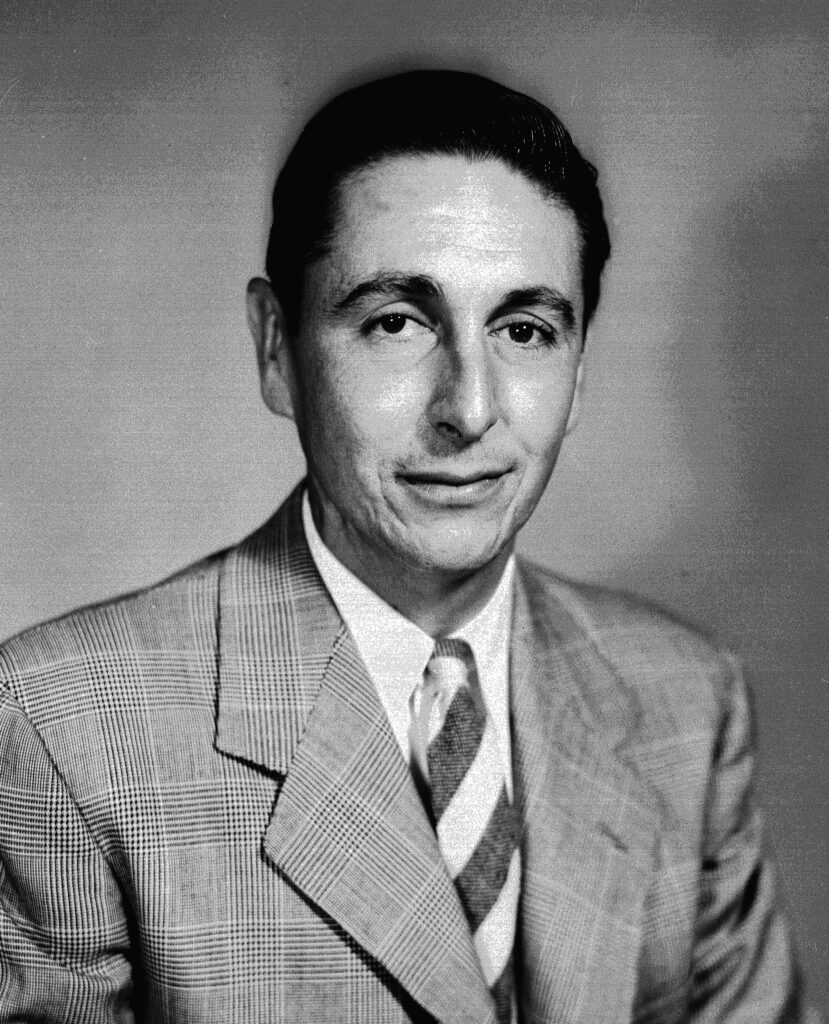Albert “Scotty” Crossfield was born in Berkeley, California, on October 2, 1921, the son of an oil company executive. After flying in an airplane for the first time at the age of six “Scotty” decided to pursue a career in aviation, and began taking flying lessons when he was twelve (without informing his parents). Paying for the lessons by washing airplanes, he was seventeen when he made his first solo flight. Crossfield began his engineering training at the University of Washington in 1940 but interrupted his education to join the U.S. Navy in 1942. Commissioned an ensign in 1943 following flight training, he served as a fighter and gunnery instructor and maintenance officer before spending six months overseas. Although he didn’t see any combat duty, he flew such aircraft as the F-6F and F-4U fighters.
Crossfield resumed his engineering studies in 1946 and graduated with a Bachelor of Science degree in Aeronautical Engineering from the University of Washington in 1949. He earned a Masters degree in Aeronautical Science the following year from the same university. He received an honorary Doctor of Science degree from the Florida Institute of Technology in 1982.
In 1950, he joined the National Advisory Committee for Aeronautics’ High-Speed Flight Station (now the NASA Dryden Flight Research Facility) at Edwards Air Force Base, California, as an aeronautical research pilot. Over the next five years, Crossfield flew the X-1, X-4, X-5, XF-92A, and D-558-I and -II aircraft, including 87 rocket flights in the X-1 and D-558-II aircraft, and twelve additional flights in the latter aircraft employing only jet power. He experienced up to twenty seconds of weightlessness on some of these flights.
Scott Crossfield made aeronautical history on November 20, 1953, when he became the first to reach the aviation milestone of Mach 2 (twice the speed of sound) or more than 1,320 miles per hour in the D-558-II Skyrocket.
With 99 flights in the rocket-powered X-1 and D-558-II, Crossfield had more experience with rocket planes than any other pilot in the world by the time he left Edwards to join North American Aviation in 1955. As North American’s chief engineering test pilot, he would play a major role in the design and development of the X-15 rocket plane. Once it was ready to fly, it was his job to demonstrate its airworthiness at speeds ranging up to Mach 3. Because the X-15 and it’s systems were unproven, these tests were extremely hazardous.
On June 8, 1959, Crossfield completed the X-15’s first flight, an unpowered glide from 37,550 feet. On September 17, 1959, he made the first powered flight of an X-15. Because of delays in the development of the X-15’s mammoth 57,000-pound thrust XLR-99 engine, the early flights were completed with a pair of interim XLR-11 rocket engines.
On November 5, 1959, an engine fire aboard his X-15 forced Crossfield to make an emergency landing on Rosamond Dry Lake, California. The X-15, not designed to land with fuel, came down with a heavy load of propellants and broke its back. Miraculously, he was uninjured and the airplane was repaired.
On June 8, 1960, he had another close call during ground tests with the XLR-99 engine. He was seated in the cockpit of an X-15 when a malfunctioning valve caused a catastrophic explosion. He was once again uninjured and the airplane was completely rebuilt. On November 15, 1960, Crossfield completed the X-15’s first powered flight with the XLR-99 engine. Two flights later, on December 6, 1960, he brought North American’s demonstration program to a successful conclusion with his final flight in the X-15.
Scott Crossfield completed sixteen captive carry flights (with the X-15 mated to the B-52 launch aircraft), one glide and thirteen powered flights in the X-15. Although it had been his hope to eventually pilot one of the craft into space, the USAF would not allow it, and gave strict orders which basically amounted to “stay in the sky, stay out of space.”
Crossfield remained at North American as systems director of test and quality assurance in the company’s Space and Information Systems Division where he oversaw quality, reliability, engineering, and systems test activities for such programs as the Apollo command and service modules and the Saturn II booster.
In 1966, he became the division’s technical director for research engineering and testing. In 1967, he joined Eastern Airlines as a division vice president for research and development and, subsequently, as a staff vice president working with U.S. military and civilian agencies on air traffic control technologies.
From 1974 to 1975, Crossfield worked for Hawker-Siddeley as a senior vice president. In 1977, he joined the U.S. House of Representatives Committee on Science and Technology where he served, until his retirement in 1993, as a technical adviser on all aspects of civil aviation research and development and became one of the nation’s leading advocates for a reinvigorated research airplane program.
Upon Scott Crossfield’s retirement in 1993, NASA Administrator Daniel S. Goldin awarded him the NASA Distinguished Public Service Medal for his contributions to aeronautics and aviation over a period spanning half a century. Crossfield’s other awards included the International Clifford B. Harmon Trophy for 1960 and the Collier Trophy for 1961 from the National Aeronautics Association, both presented by President John F. Kennedy in a White House ceremony.
In 2000, Crossfield described how the X-15 aeronautical calculations and design required computing power that filled four ten by twelve-foot rooms. He said the same calculations could be performed today on a notebook computer. On April 19, 2006, a Cessna 210 piloted by Crossfield went missing between Prattville, Alabama, and Herndon, Virginia. The next day authorities confirmed his body was found in the wreckage of his plane in a remote area near Ranger, Georgia. It is believed severe weather caused the crash.

